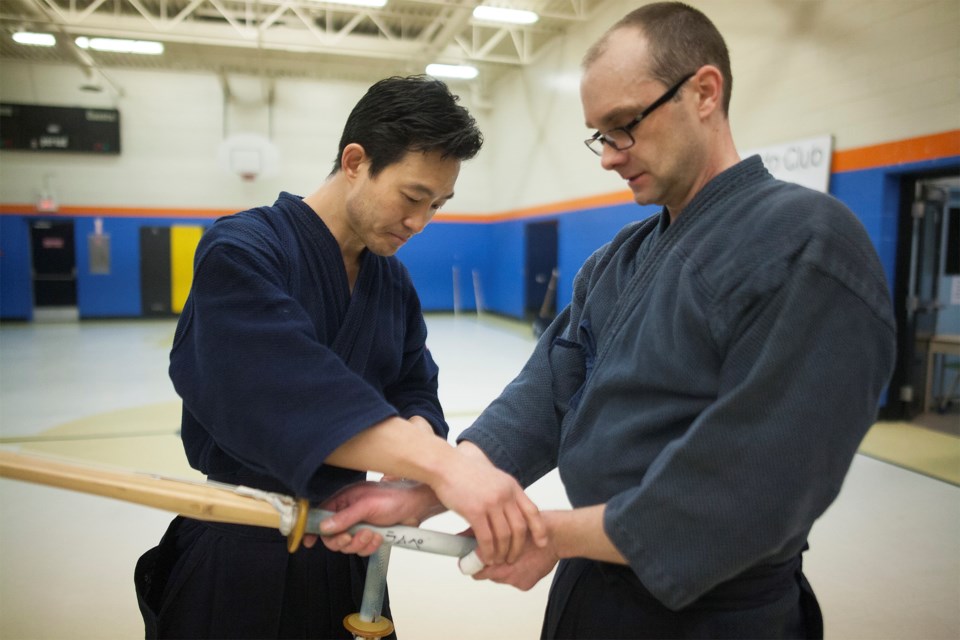"It's honour. It's balance. It's justice. Kendo is everything that Jedi are."
So says Nick Gillard, stunt coordinator for the Star Wars prequel movies Star Wars: Episode I The Phantom Menace, Star Wars: Episode II Attack of the Clones, and Star Wars: Episode III Revenge of the Sith.
Kendo is the art of Japanese fencing, based on the two-handed sword technique of the samurai.
Devotees use bamboo shinais in place of metal swords.
"Kendo became my base ingredient," says Gillard, describing the lightsaber fights he developed for the prequel trilogy.
Gillard was speaking in a mini-documentary titled Star Wars: Evolution of the Lightsaber Duel, hosted by Mark Hamill and aired by ESPN last month, just days before the release of Star Wars: The Force Awakens, the seventh installment in the main Star Wars franchise.
In the documentary, Hamill and others described kendo's intense athleticism and discipline, and its history in motion pictures.
This weekend, with Star Wars: The Force Awakens now the highest-ever grossing movie in North America and the third-highest-grossing film of all time, a senior official of the Canadian Kendo Federation was in the Sault to conduct two days of training for 10 members of the Algoma Kendo Club.
Hyun-June Choi lives in Maple, north of Toronto.
Sensei Choi is the national sports body's eastern region vice president and a member of Canada's national team at the 2009 World Kendo Championships in São Paulo, Brazil.
He's currently instructor at Jung Ko Kendo in Thornhill.
"As a national body that promotes kendo, iaido and jodo in Canada, we are trying to reach out as much as possible to all the clubs all over Canada, especially to promote it in the remote areas, away from the traditional kendo population centres of Toronto and Vancouver," Choi told SooToday.
There are about 50 affiliated kendo clubs across Canada.
"The beauty of kendo is that you can practise it at any age, from very young to very old," Choi said.
As for the Algoma Kendo Club, "I'm very impressed where they are, especially with the leadership that Brian Lampe and Matthew Keenan have provided. There's a good future and I think they'll progress very well."
And whenever major motion pictures feature samurai-style fighting, local kendo clubs experience increased interest, the sensei says.
"We do, especially when certain martial arts enter mainstream discussion, with movies like The Last Samurai or Star Wars. These do influence and we do get some turnout, but I think over the years the kendo population has remained quite stable, even though we see some peaks and declines."
Kendo is a lifetime endeavour and most high-level practitioners have trained for 10 or 20 years or more.
"People discover how physically demanding kendo is, even though the movements are very natural and basic so you can do it with minimal injuries until old age. But sometimes it's the physical demands that make people drop out."
Sensei Choi definitely sees kendo influences in Star Wars: The Force Awakens.
"I think that George Lucas incorporated that bushido culture from Japan, which is also kept very much alive by traditions in kendo," he says.
But as always, Hollywood takes liberties.
"As to the exact movements of the sword fighting that you see in the movie, it's quite different from traditional kendo. You see how it's influenced but it is quite different."
The Algoma Kendo Club provides weekly instruction in Sault Ste. Marie.
For more information, please e-mail [email protected]
